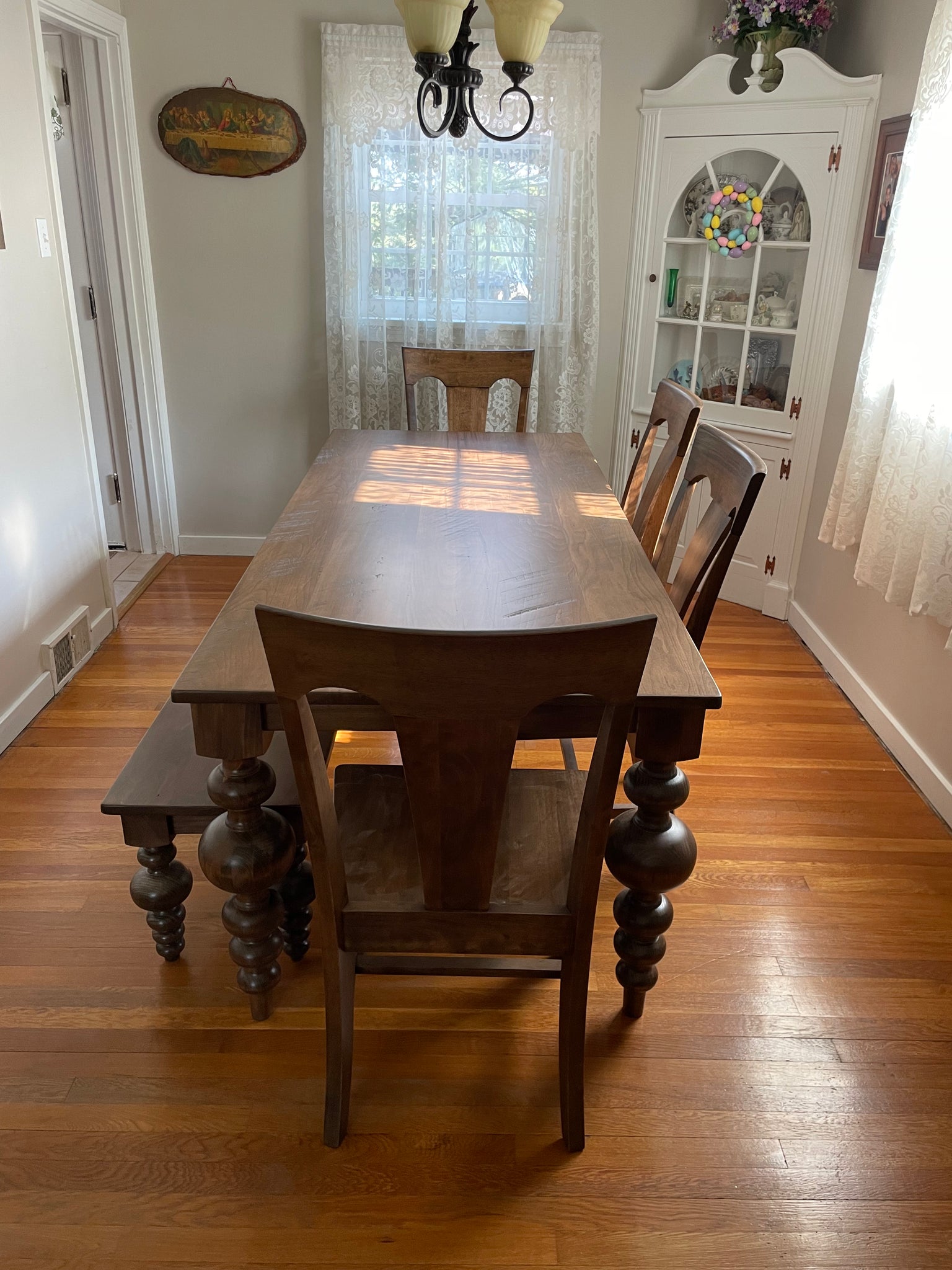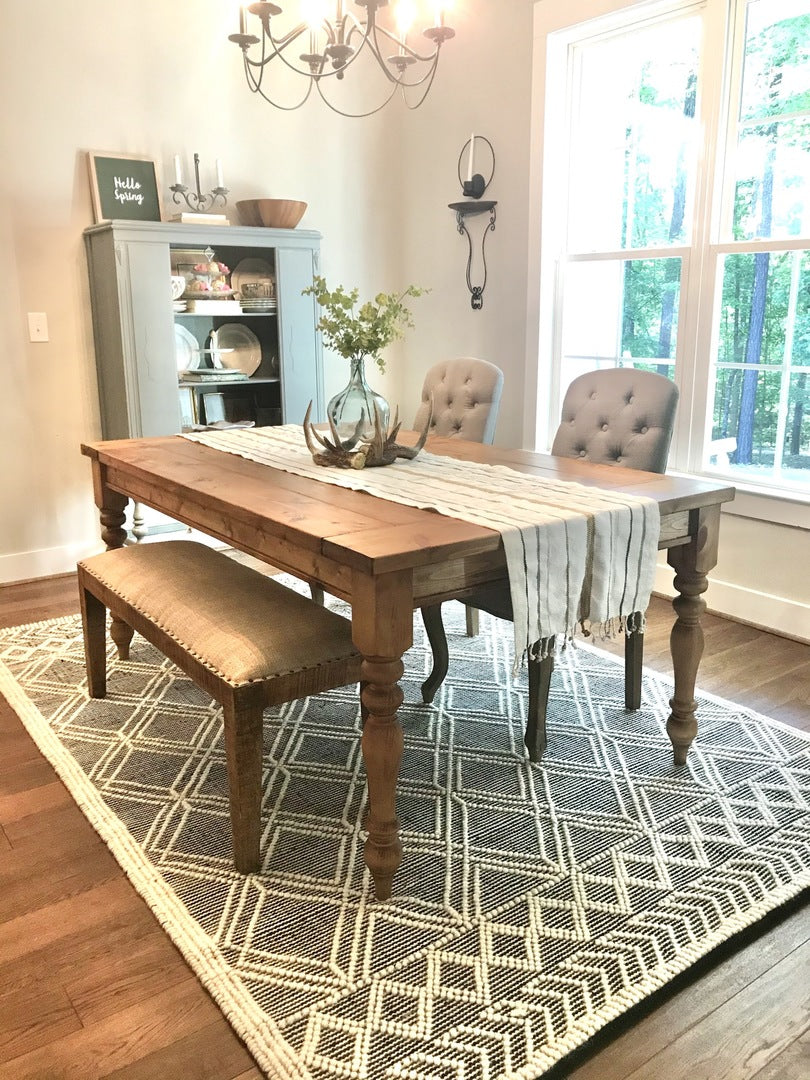Distinct Dining Room Table Legs to Transform Your Dining Location
Wiki Article
A Detailed Take A Look At Table Leg Styles: Finding the Ideal Suit
Choosing the right eating table leg design is critical for both aesthetic appeal and sensible functionality. Typical four legs supply timeless style and security, while the stand base gives boosted legroom and a contemporary look. For those with bigger tables, trestle legs guarantee durable support, whereas hairpin legs present a mid-century modern ambiance with their minimal design. The x-shaped legs blend modern design with boosted stability. Each of these options brings one-of-a-kind advantages, making the selection greater than simply an issue of preference. Discover additionally to discover which design flawlessly enhances your eating area and way of living.Typical Four Legs
Among the different types of eating table leg styles, the typical four-leg design remains a timeless selection for several houses. 4 legs give well balanced assistance, ensuring the table continues to be steady and capable of bearing considerable weight (dining room table legs).From a visual viewpoint, the typical four-leg design can be conveniently adapted to different indoor styles. Whether crafted from wood, steel, or a mix of products, these legs can be elaborately carved, smooth and minimalistic, or anything in between. Their flexibility permits them to enhance both rustic and modern setups flawlessly.
Additionally, the simple structure of the four-leg layout promotes simplicity of movement and positioning within a space. Unlike even more complicated bases, this style decreases obstructions, providing adequate legroom for diners. In recap, the conventional four-leg dining table leg design marries withstanding beauty with sensible functionality, making it a sharp choice for those looking for both form and feature in their dining furniture.
Stand Base
Commonly celebrated for its classy and space-efficient design, the stand base is a distinguished choice to the traditional four-leg arrangement in table leg styles. This distinct base usually includes a single central column sustaining the tabletop, which can vary in kind, from ornately carved wood to streamlined, modern metal. Among the primary advantages of the stand base is its capacity to maximize legroom and seating versatility. Without edge legs, restaurants are afforded higher liberty of movement, making it a suitable selection for round and oval tables that promote even more intimate and comprehensive gatherings.Furthermore, the pedestal base's central support can manage significant weight, permitting making use of heavier tabletops, such as marble or thick wood. This strength coupled with its aesthetic versatility makes the pedestal base a popular choice in both conventional and contemporary interior settings. It can seamlessly integrate with numerous layout motifs, from timeless style to minimal modernity. Moreover, the central column itself provides a canvas for elaborate designs and imaginative expressions, adding an element of aesthetic passion under the table. In recap, the pedestal base combines capability with design, making it a fine-tuned and practical option for varied dining environments.
Trestle Legs
Trestle legs provide a durable and ageless structure for dining tables, characterized by their straight cross-bracing and sturdy assistance beams. Stemming from middle ages times, this style has actually progressed yet retained its important framework, making it a perennial fave in both conventional and modern settings. The main trestle beam, usually supported by 2 or more upright posts, provides remarkable security, enabling larger table sizes without the need for extra legs.A substantial advantage of trestle leg tables is the enough legroom they offer. Unlike tables with four edge legs, the absence of obstructions at the table's sides gives unimpeded area for chairs and restaurants, enhancing comfort and access. This makes trestle tables perfect for fitting bigger gatherings, whether in a dining space or a reception hall.
The visual flexibility of trestle legs is notable. Readily available in a variety of materials such as wood, metal, and composite, they can be completed to enhance a large range of interior designs. From rustic farmhouse to streamlined modern designs, trestle legs can be personalized to fit specific preferences. Their long-lasting appeal and functional benefits make trestle legs a compelling option for those seeking both design and functionality in their eating table.
Barrette Legs

The allure of hairpin legs exists in their simpleness and flexibility - dining room table legs. Readily available in a range of materials, consisting of steel and brass, they can be finished in various shades to enhance different interior designs. Whether coupled with a rustic wooden tabletop or a modern glass surface area, barrette legs effortlessly blend performance with a touch of his explanation classic charm
Longevity is another noteworthy function of barrette legs. Regardless of their delicate appearance, these legs are engineered to bear considerable weight, making certain the table remains stable and protected. Furthermore, they are reasonably very easy to mount, making them a popular choice for DIY enthusiasts and expert furniture makers alike.
X-Shaped Legs

Constructed from materials such as steel, timber, or a mix of both, X-shaped legs can be tailored to match various design preferences. Steel legs commonly provide a streamlined and commercial feel, ideal for loft-style houses and contemporary eating rooms.
Moreover, the engineering my sources behind X-shaped legs ensures even weight distribution, lessening the danger of tottering and boosting durability. This makes them particularly well-suited for larger dining tables that require additional support. Fundamentally, X-shaped legs blend useful engineering with modern aesthetic appeals, making them an ageless option for diverse dining environments.
Conclusion
An extensive understanding of table leg styles discloses the distinctive features and advantages of each style. Standard four legs provide stability and timeless allure, while pedestal bases give legroom and a streamlined appearance. Trestle legs ensure robust assistance for bigger tables, and hairpin legs introduce a mid-century modern visual. X-shaped legs integrate contemporary design with boosted stability. Picking the proper leg style ensures both useful and visual fulfillment in any eating area.Report this wiki page